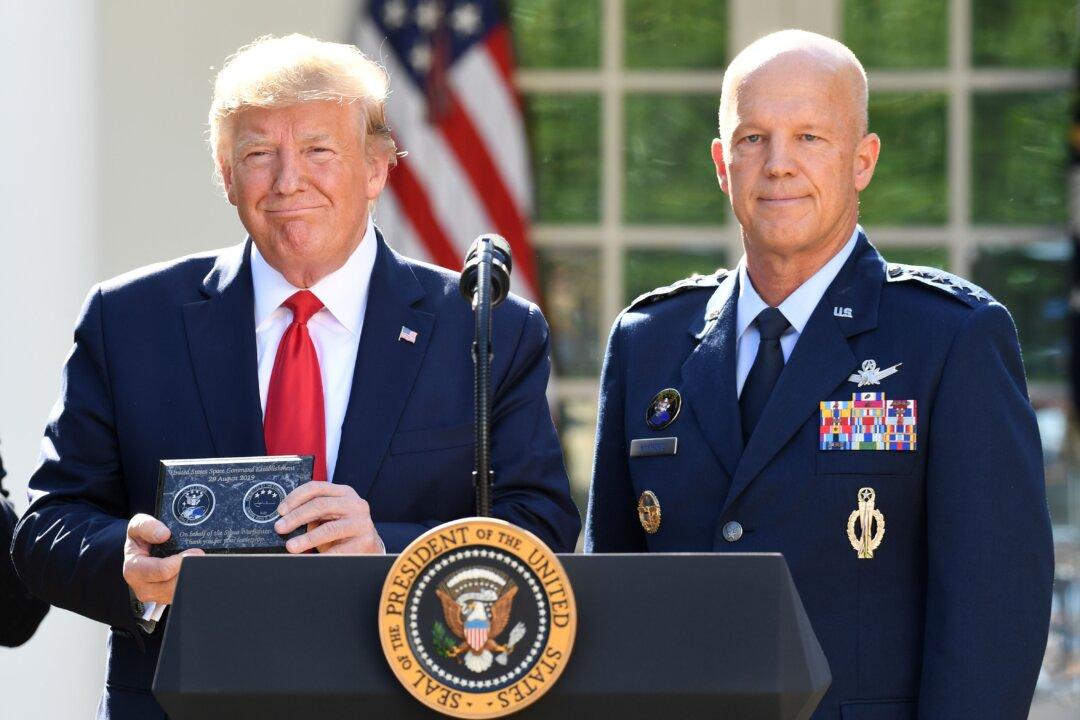Gen. John Raymond, leader of the U.S. Space Command—a precursor to the yet-to-be-established Space Force—outlined on Nov. 18 the agency’s “significant” advances, including the developing of “space warfighters,” and said he was eager for Congress to pass the 2020 National Defense Authorization Act (NDAA) to work on the sixth military branch of the armed forces.
The four-star general, nominated by President Donald Trump, described an 11-word motto of sorts driving the advances made so far within the command: “Space is a warfighting domain, just like air, land, and sea.” He made his remarks at the Center for Strategic and International Studies, a Washington-based think tank.





